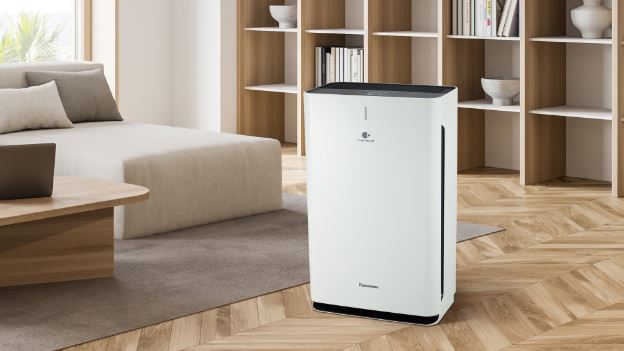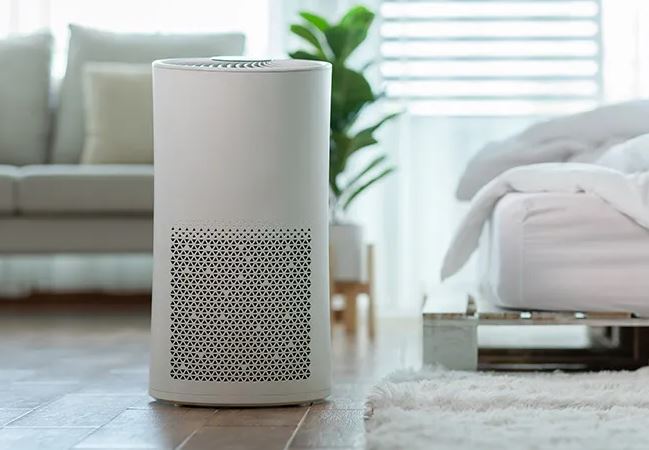Air Purifiers with Sensors: Intelligent Technology for Optimal Air Quality
Wiki Article
In an era of heightened health awareness, the quality of the air we breathe has become an increasingly important consideration for individuals across the globe. With rising pollution levels and a deeper insight of the impacts of indoor air quality on our health, it's no surprise that the demand for air purifiers is on the rise.
Air purifiers are machines that remove contaminants from the air in a room, enhancing the air we breathe indoors. They are particularly beneficial for those with allergies, asthma, or respiratory concerns as they can significantly reduce the levels of allergens, pollutants, and irritants in the air. For those without respiratory concerns can take advantage of air purifiers, as they give added assurance and protect against airborne pathogens.
This comprehensive overview will dive deep into the fascinating realm of air purifiers, discussing the perks they offer, the variety of options on the market, essential factors when selecting the right model, and how to get the most out of your device. By the end, you should have a comprehensive understanding of air purifiers and be able to decide confidently about whether investing in one is the smart move for your household.

Unraveling Indoor Air Contaminants and Their Effects on Well-being
To understand why air purifiers are essential, it's vital to understand the variety of contaminants they address and the possible effects of prolonged exposure.
Indoor air pollutants can be generally classified into the following three categories:
- Particulate Matter: This includes solid particles and liquid droplets suspended in the air. Examples include smoke, dust, pollen, pet dander, and mold spores. Particulate matter can cause respiratory issues and cause allergic flare-ups.
- Understanding Volatile Organic Compounds: VOCs are gaseous compounds released from solids and liquids. Sources of VOCs include cleaning agents, paints, aerosol sprays, pesticides, and similar products. Exposure to VOCs can lead to irritation of the eyes, nose, and throat, as well as headaches and nausea.
- Biological Contaminants: These include microbes such as bacteria, viruses, mold spores, and mildew. They can cause a variety of health problems, from minor allergies to serious infections.
The consequences of exposure on human health can differ considerably. For individuals with respiratory conditions or compromised immune systems, exposure to indoor air pollutants can lead to serious health issues. Even for healthy people, chronic exposure to certain pollutants can increase the risk of respiratory conditions and other health concerns over time.

How Air Purifiers Work
Air purifiers use a variety of physical and chemical processes to effectively eliminate contaminants. Understanding the basic mechanisms employed by purifiers will help you understand their efficiency and the different types available on the market.
Here are the core processes and cutting-edge technologies used in air purifiers:
- Filtration Excellence: This is the most widely used approach used in air purifiers. It involves using specialized filters to capture particles as air is passed through the filtration system. The filters can be made from various materials, each designed to trap particular particle types. For example:
- Pre-filters: The First Line of Defense: These are usually the first line of defense, trapping bigger contaminants like dust, hair, and similar larger particles.
- HEPA Filtration: Unparalleled Performance: HEPA filters are remarkably proficient at trapping tiny particles, including dust mites, pollen, bacteria, and viruses. To be labeled a bona fide HEPA filter, it must capture at least 99.97% of particles as small as 0.3 microns.
- carbon filtration: These filters are designed to reduce VOCs and odors.
- Ionizers: Charging Ahead: Ionizers use electrical charges to create negatively charged ions, which attach themselves to particles in the air. The particles become charged, causing them to stick to surfaces or the purifier.
- Ozone's Double-Edged Sword: Some air purifiers use ozone as a powerful cleaning agent. While effective, ozone can also be harmful to human health so these types of purifiers should be used with caution and only in unoccupied spaces.
- Ultraviolet (UV) Light: UV light can be used to destroy biological contaminants like bacteria, viruses, and mold spores. UV light is often used in combination with a filter to eliminate particles, while UV light ensures any remaining biological contaminants are destroyed.
Selecting the Perfect Purifier
With a plethora of options available, selecting the ideal air purification system can be a difficult decision. It's important to consider a range of criteria to ensure you make the right choice for your particular needs and room size.
Here are some crucial points to consider:
- Considering Room Size: Air purifiers are typically rated for specific room sizes, so it's important to choose a model that can efficiently purify the air in the designated space. Most purifiers will list a maximum room coverage or CADR, which indicates the volume of filtered air delivered per minute.
- Understanding Contaminants: Identify the specific pollutants you want to target. If you suffer from allergies, look for a purifier with a true HEPA filter. For odor removal, consider a model with a activated carbon filter. If you're concerned about bacteria and viruses, a purifier with UV light disinfection might be best.
- Noise Level: Air purifiers can produce different noise levels, so if you plan to use it in a bedroom or quiet space, look for models with a sleep mode or quiet setting.
- Maintaining Performance: Consider the ongoing costs and maintenance requirements of the purifier. HEPA filtration systems may need periodic replacement, depending on use and environmental factors. Factor in the cost of replacement filters when making your choice.
- Smart Innovations: Many purifiers offer intelligent features like air quality sensors, automatic modes, and Wi-Fi connectivity, allowing convenient remote access and monitoring. These features can make your purifier more user-friendly and efficient.
Unlocking the Full Potential of Your Air Purifier
Once you've chosen and set up your air purifier, there are several things you can do to ensure it operates at optimal levels and delivers the optimal results:
- Strategic Positioning: Position your purifier in an central location, free from obstacles, to ensure effective airflow. Avoid placing it near external openings as drafts can impact its efficiency.
- Round-the-clock Operation: For the best results, it's recommended to run your purifier regularly. Many models have automatic or low-power settings that respond to air quality changes, so you can maintain healthy air quality while conserving energy.
- Regular Filter Care: Regularly adhere to the recommended filter replacement schedule. Over time, filters become saturated with particles, affecting efficiency. Schedule filter replacements so you don't forget.
- Limiting Indoor Pollutants: Alongside using an air purifier, take steps to limit indoor contaminants. This could include vacuuming, dusting, choosing natural cleaning alternatives, and limiting aerosol and chemical products. Report this wiki page